28 Tasty Traditional Caribbean Snacks You’ll Crave
Caribbean snacks represent a vibrant culinary tapestry woven from generations of cultural fusion and regional creativity.
Generations of island inhabitants have crafted delightful bite-sized delicacies that tell stories of migration, adaptation, and community.
These small treasures blend indigenous ingredients with international influences, creating unique flavor profiles that dance across taste buds.
Rich spices, tropical fruits, and local techniques transform simple components into extraordinary gastronomic experiences.
Each snack carries whispers of history, reflecting the resilient spirit of Caribbean communities through their innovative cooking methods.
The diversity of these treats mirrors the complex social landscapes of Caribbean nations, where multiple traditions intersect and celebrate shared heritage.
Passionate food lovers find themselves drawn to the authentic and unexpected combinations that make these snacks truly special.
You'll find fascinating details about 28 traditional Caribbean snacks that capture the essence of island cuisine:
Traditional Caribbean Snacks for Island Vibes
Caribbean snacks are bursting with color and personality, think fried plantains, spicy patties, and coconut treats. Perfect for sharing, these bites embody the joy of island living.
Yaniqueque
Yaniqueques are crispy, golden-brown Dominican fried breads originating from Caribbean immigrant traditions in the early 1900s.
Thin circular dough made with simple ingredients like flour, salt, melted butter, and baking powder creates their signature crunch.
Street vendors and beach stalls across Dominican Republic frequently serve these popular snacks.
Immigrants from other Caribbean islands likely introduced the bread as a variation of traditional johnny cakes.
Hot oil transforms the thin dough into a perfectly crisp treat with lightly crimped edges.
Salt and butter provide rich flavor to the light, airy bread.
Excess oil drains on paper towels after frying.
Benne Balls
Benne balls are rock-hard Tobagonian candies with an intense sweetness crafted from caramelized brown sugar and sesame seeds.
African roots define these dense treats that originated in Trinidad and Tobago's street food culture.
Local vendors create these sweets by heating brown sugar and mixing in benne (sesame seeds) until the mixture reaches a thick consistency.
Craftsmen roll the sticky blend into small spheres and let them cool into crunchy rounds.
Street stalls near beaches typically sell these challenging-to-bite confections.
Travelers and locals enjoy these sugary snacks as quick energy boosters.
Benne balls demand strong teeth to crack through their tough exterior.
Each bite delivers a rich, sweet punch of concentrated sugar and nutty sesame flavor.
Jamaican Patty
Jamaican meat patties are golden-crusted pastry pockets bursting with spicy, fragrant fillings that reflect Jamaica's rich culinary heritage.
These half-moon shaped hand pies blend English, Spanish, and African cooking traditions into a single delicious bite.
Turmeric gives the pastry its signature yellow color and adds subtle warmth to the exterior.
Ground beef mingles with breadcrumbs and a complex spice blend including thyme, onions, garlic, and fiery Scotch bonnet chilis.
Curry powder provides an additional layer of zesty flavor that distinguishes these patties from other meat pies worldwide.
Street vendors and home cooks across Jamaica prepare these portable meals as quick snacks or substantial main courses.
Each patty represents a delicious fusion of cultural influences that tells a story of Jamaica's diverse culinary landscape.
Jamaicans enjoy these spicy, flaky pastries as a beloved national dish that connects generations through shared flavor.
Doubles
Doubles are an iconic Trinidadian street food sandwich featuring two fluffy fried flatbreads (bara) stuffed with spicy curried chickpeas (curry channa) that originated in Princes Town in 1936.
Street vendors typically wrap these savory treats in paper for easy handheld eating.
Breakfast and late-night crowds love their portable nature and intense flavor profile.
Adventurous eaters customize their doubles with fiery pepper sauce, tangy tamarind sauce, or zesty green mango pickle called kuchela.
Local carts and roadside stands serve these affordable snacks throughout Trinidad and Tobago.
Travelers and locals alike crave the complex spices and satisfying texture of this beloved street food.
Caribbean culinary traditions shine through each bite of these flavorful chickpea-filled breads.
Trinidad's street food culture comes alive in this simple yet remarkable sandwich.
Bake And Shark
Bake and shark represents Trinidad's boldest street food, featuring crispy shark meat nestled inside freshly fried flatbread with an explosive mix of Caribbean spices and condiments.
Originating from Trinidad's coastal regions, this iconic dish combines deep-fried shark fillets with warm, pillowy bake bread crafted from simple flour-based dough.
Street vendors at Maracas Beach popularized the sandwich, transforming it into a national culinary sensation enjoyed during festivals, concerts, and beach gatherings.
Marinated shark pieces get seasoned with local spices before being quickly fried to achieve a golden, crunchy exterior.
Diners customize their bake and shark with an array of tangy chutneys, pepper sauces, and fresh vegetable toppings.
Regional ingredients like chadon beni, tamarind sauce, and scotch bonnet peppers enhance the sandwich's complex flavor profile.
Seafood enthusiasts prize the dish for its unique texture and bold Caribbean taste.
Pholourie
Pholourie are deep-fried Caribbean fritters bursting with bold Trinidadian flavors and cultural significance.
Originating from Indian culinary traditions, these golden-brown bite-sized snacks blend split pea flour with hot peppers and aromatic spices.
Religious gatherings and birthday celebrations often feature these crispy treats as a popular appetizer.
Street vendors and local bakeries across Trinidad sell these savory morsels as quick street food.
Small spherical balls are carefully dropped into hot oil until they achieve a perfect golden-brown exterior.
Tangy chutneys and sauces traditionally accompany pholourie, enhancing their spicy profile.
Family recipes and cooking techniques pass down through generations, maintaining this beloved Caribbean snack's authenticity.
Aloo Pie
Aloo pie are savory Trinidad street food parcels stuffed with spiced potato mixture and deep-fried to golden crispiness.
Caribbean markets and food stands across Trinidad sell these popular handheld snacks packed with aromatic flavors from cumin, onions, and bandhania.
Crispy exterior shells encase smooth mashed potato fillings that burst with warmth and spice when you bite inside.
Street vendors frequently serve aloo pies alongside tangy chutneys for extra zest and complexity.
Trinidadian communities worldwide cherish these portable treats as comfort food with deep cultural roots.
Salt and pepper enhance the potato's natural earthiness within each perfectly seasoned bite.
Small gatherings and quick lunches often feature these handheld pockets as satisfying meals.
Generations have passed down recipes that transform simple ingredients into a beloved national snack.
Baiganee
Baiganee represents a crispy, golden-brown Trinidad and Tobago street food featuring deep-fried eggplant slices coated in spicy batter.
Street vendors often sell this vegetarian snack during cultural celebrations like Divali, creating a crunchy and flavorful experience.
Baigan, the local word for eggplant, inspired the dish's unique name and core ingredient.
Trini cuisine transforms the humble vegetable into a crowd-pleasing treat that balances spice and texture.
Tamarind dipping sauce or mango chutney typically accompanies baiganee, enhancing its rich flavor profile.
Home cooks and street vendors alike prepare this simple yet satisfying snack using fresh ingredients and traditional techniques.
Caribbean culinary traditions shine through this crisp, savory dish that appeals to vegetarians and meat-eaters.
Baiganee serves as both a popular side dish and standalone snack, reflecting Trinidad's diverse food culture.
Tostones
Tostones are crispy, golden-brown plantain fritters that transform unripe, green plantains into a crunchy Caribbean delicacy.
Puerto Ricans pioneered this popular side dish, cutting green plantains into thick slices and double-frying them for maximum crispiness.
Skilled cooks flatten the first-fried slices before re-frying them to create a perfectly crisp exterior with a soft interior.
Sea salt enhances their savory flavor, making them an irresistible accompaniment to many main courses.
Garlic mojo sauce frequently complements these plantain chips, adding a zesty punch to their simple preparation.
Latin American restaurants and home kitchens alike celebrate these versatile fritters as a staple side dish.
Regional variations exist across the Caribbean, with each culture adding its unique twist to the basic recipe.
Caribbean and Latin American cuisine would feel incomplete without these addictive, golden plantain discs.
Pate Haitien
Haitian patties burst with savory meats wrapped in flaky puff pastry squares, delivering a quick street food staple popular across Haiti's vibrant culinary landscape.
Street vendors frequently sell these handheld treats freshly prepared, offering quick and satisfying meals for locals and visitors.
Beef, chicken, pork, and fish fillings provide diverse flavor options for hungry patrons seeking a substantial snack.
Small rectangular pastries emerge golden brown and crispy after careful baking or frying.
Home cooks and professional kitchens prepare these pastries for special celebrations and everyday meals.
Traditional accompaniments like rice and beans complement the patties' rich flavors.
Jamaican and French culinary influences contribute to the patties' unique preparation techniques.
Street food culture plays a significant role in popularizing these portable and delicious Haitian pastries.
Alcapurria
Alcapurrias are savory Puerto Rican fritters bursting with flavor and cultural significance, featuring a crispy exterior made from grated green bananas or taro root.
Native islanders traditionally stuff these golden-brown treats with seasoned ground beef called picadillo, which combines spicy meat with tomatoes and aromatic spices.
Yucca variations often include delicate crab meat as a luxurious filling alternative.
Street vendors and home cooks across Puerto Rico prepare these handheld snacks using generations-old techniques.
Deep-frying transforms the banana or root vegetable mixture into a crunchy, irresistible appetizer.
Caribbean culinary traditions shape each alcapurria's unique texture and taste.
Regions throughout Puerto Rico boast slight recipe variations that reflect local ingredients.
Families pass down these recipes as cherished culinary memories connecting generations.
Barriguitas De Vieja
Barriguitas de vieja are savory Puerto Rican fritters crafted from roasted kabocha squash, transforming simple ingredients into crispy golden bites.
Puerto Rican families traditionally prepare these small, round treats by mixing mashed squash with flour, eggs, and subtle spices.
Street vendors and home kitchens across Puerto Rico serve these warm, crispy snacks as beloved street food.
Deep-frying creates a crunchy exterior that contrasts with the soft, sweet squash interior.
Sugar adds a gentle sweetness to balance the squash's earthy flavor.
Street markets and local festivals often feature these fritters as quick, affordable snacks.
Home cooks pass down generations-old recipes for this classic dish.
Small, bite-sized portions make barriguitas de vieja perfect for sharing and enjoying with friends.
Pastechi
Pastechi are savory pastry pockets from Curaçao that blend Caribbean and Dutch culinary influences through crispy deep-fried dough encasing flavorful fillings.
Small crescent-shaped pastries burst with seasoned meats like chicken, beef, or tuna mixed with aromatic ingredients such as onions, green peppers, and spices.
Raisins and cumin add unexpected sweetness and warmth to the traditional recipe.
Salt and hot peppers provide an extra kick to the flavor profile.
Street vendors and home cooks prepare these handheld treats for quick breakfasts or satisfying snacks.
Regional variations showcase the versatility of this beloved Caribbean street food.
Families and communities share these compact pastries during social gatherings and casual meals.
Stamp And Go
Stamp and go are crispy Jamaican fritters bursting with salted codfish, a beloved street food originating from Caribbean culinary traditions.
Jamaicans traditionally prepare these golden-brown snacks using shredded salt cod mixed with flour, peppers, and spices.
Deep-frying transforms the batter into crunchy, bite-sized morsels perfect for quick meals or appetizers.
Fishermen and travelers first developed these portable snacks as convenient, protein-rich sustenance during long journeys.
Multiple variations exist, including versions with callaloo, ackee, or conch as alternative protein sources.
Street vendors and home cooks frequently serve stamp and go with sweet dipping sauces that complement the savory fritters.
Regional recipes vary slightly across different Jamaican communities, reflecting local ingredient availability.
Caribbean families often enjoy these fritters during casual gatherings or as quick breakfast options.
Bulla Cake
Bulla cake embodies Jamaica's rich culinary heritage as a traditional sweet bread with deep cultural roots.
Jamaican bakers craft this dense, circular flatbread using simple ingredients like flour, molasses, and baking powder.
Ginger and nutmeg often enhance its distinctive flavor profile, creating a warming spice blend.
Dark or light in color, the cake originated in the 19th century and gained widespread popularity during the 1980s.
Large commercial bakeries now produce most bulla cakes across Jamaica.
Molasses provides a rich, deep sweetness that distinguishes this compact bread.
Jamaicans enjoy bulla cake as a quick snack or breakfast item.
Regional variations may include slight modifications to the original recipe, reflecting local tastes and ingredients.
Peanut Drops
Peanut drops are traditional Jamaican street treats featuring caramelized peanuts with a signature sweet-spicy profile that transforms simple ingredients into an irresistible snack.
Jamaican vendors craft these candied morsels by boiling roasted peanuts with minced ginger and brown sugar until a thick syrup develops and coats each nut.
Small batches are carefully prepared on street corners and local markets, allowing the sugar to slowly reduce and create a sticky caramel glaze.
Brown sugar provides deep molasses undertones that complement the roasted peanuts' natural richness.
Ginger adds a subtle warm spiciness that cuts through the sweetness, creating complex flavor layers.
Cooling transforms the liquid into a hard candy-like coating that crunches when bitten.
Street sellers often package these treats in small paper bags for easy portability.
Jamaicans enjoy peanut drops as quick energy-boosting snacks during work breaks or social gatherings.
Aranitas
Aranitas are crispy Puerto Rican fritters made from shredded green plantains that resemble tiny spiders, giving them their unique name.
Street vendors and home cooks across Puerto Rico craft these golden-brown snacks by carefully grating unripe plantains into thin strips.
Skilled hands transform the plantain shreds into delicate, web-like shapes before deep-frying them until perfectly crunchy and light brown.
Puerto Ricans traditionally serve aranitas with zesty garlic sauce or smooth guacamole for dipping.
Caribbean culinary traditions inspire this popular appetizer that balances texture and flavor.
Green plantains provide a starchy base that creates an irresistible crunch when fried.
Salt and pepper season the fritters, enhancing their natural plantain taste.
Regional variations might include additional spices or herbs to personalize this beloved street food.
Toto
Toto is a classic Jamaican sweet bread bursting with tropical ingredients and rich cultural heritage.
Caribbean bakers craft this dense, moist cake using flour, sugar, and freshly grated coconut as its primary components.
Eggs, milk, and butter blend seamlessly to create a soft, compact texture that melts in you mouth.
Traditional spices like allspice, nutmeg, and ginger infuse deep warmth into every slice.
Some bakers enhance the cake's complexity by adding rum-soaked raisins for extra depth and sweetness.
Jamaican families often serve toto as a breakfast treat or afternoon snack alongside strong coffee.
Regional variations reflect personal preferences and family recipes passed through generations.
Home kitchens and bakeries across Jamaica continue to celebrate this beloved national dessert.
Saheena
Saheena represents Trinidad and Tobago's innovative vegetarian street food made from split peas and flour wrapped in taro leaves.
Caribbean cooks transform split peas powder, flour, saffron, baking powder, and salt into a smooth paste.
Skilled hands spread this mixture carefully onto fresh taro leaves.
Prepared leaves are rolled tightly into compact bundles.
Kitchen experts then boil or steam these green packages until perfectly cooked.
Saheena offers a nutritious protein-rich snack popular in West Indian cuisine.
Traditional recipes pass through generations as a beloved island specialty.
Vegetarians and street food fans enjoy this unique Caribbean treat.
Solomon Gundy
Solomon Gundy represents a zesty Jamaican fish pate bursting with bold Caribbean flavors from smoked red herring or mackerel blended with fiery hot peppers, sharp onions, and aromatic spices.
Jamaican households traditionally serve this spicy appetizer with crisp crackers as a quick snack or starter.
Regional variations include pairing the pate with creamy avocado slices or roasted breadfruit for added texture.
Islands throughout the Caribbean have embraced this simple yet intense spread as a popular nibble.
Small gatherings often feature Solomon Gundy alongside steaming cups of tea for a perfect flavor combination.
Seafood lovers appreciate its quick preparation and rich smoky undertones.
Jamaican kitchens transform humble ingredients into an explosive taste experience.
Generations have passed down this recipe as a testament to island culinary creativity.
Accra
Ghanaian accra are crispy, golden-brown fritters bursting with West African street food flavor and cultural significance.
Black-eyed peas form the core ingredient of these savory snacks, blended seamlessly with scallions, onions, and garlic.
Chili peppers and bell peppers add sharp, spicy notes that complement the legume's earthy base.
Eggs and flour bind the mixture, creating a light, airy texture when deep-fried to perfection.
Malanga, a nutty root vegetable similar to cassava, contributes additional depth and complexity to the fritter.
Ghanaian households and street vendors traditionally prepare accra as a quick, satisfying meal or appetizer.
Regional variations exist across West Africa, with each community adding unique local ingredients.
Street food culture celebrates these small, flavorful bites as a testament to culinary creativity and resourcefulness.
Bolita Di Keshi
Bolita di keshi are crispy, golden cheese balls beloved across Aruba as a mouthwatering street snack bursting with rich flavor.
Originating from Caribbean culinary traditions, these deep-fried cheese bites provide an irresistible combination of crunchy exterior and creamy interior.
Children and adults eagerly devour these bite-sized treats at family gatherings, parties, and local street food markets.
Aged gouda or similar hard cheeses form the primary ingredient, mixed with flour and seasonings to create a perfect dough.
Professional and home cooks quickly shape small round balls before carefully frying them in hot oil until they reach a beautiful golden brown color.
Each bite delivers a satisfying crunch and warm, melted cheese center that makes bolita di keshi an iconic Aruban comfort food.
Nutritionally dense and high in calories, these cheese balls serve as a popular snack across the Caribbean island.
Spiced Yucca Chips
Spiced yucca chips showcase Aruba's bold culinary spirit through crispy, thin-cut root vegetable slices packed with intense flavor.
Native to the Caribbean island, these chips transform humble yucca into a spicy snack bursting with chili and cayenne heat.
Farmers harvest the starchy root, which contains significant fiber and carbohydrates, making it a nutritious alternative to traditional potato chips.
Workers carefully slice yucca into thin pieces before deep-frying in hot oil until achieving a pale golden color.
Salt and spice blend generously coat each chip, creating a crunchy texture that complements the vegetable's natural earthiness.
Street vendors and home kitchens across Aruba prepare these addictive snacks using generations-old techniques.
Regional spice preferences determine the exact heat level, ranging from mild to fiery hot.
Travelers and locals alike enjoy these crisp, zesty chips as a quick and satisfying treat.
Kachourie
Kachourie represents a crispy Trinidadian street food packed with Indian culinary heritage, featuring flattened dough balls crafted from flour, channa, and split peas seasoned with bold spices like turmeric, black pepper, and chili powder.
Caribbean cooks carefully blend these ingredients into compact rounds before deep-frying them to achieve a golden-brown exterior with a satisfyingly crunchy texture.
Trinidad's multicultural influences shine through this savory snack, which connects Indian immigrant traditions with local Caribbean cooking styles.
Street vendors and home kitchens across the island prepare these bite-sized treats as quick, flavorful appetizers or snacks.
Families often serve kachourie during gatherings, celebrations, and casual meals.
Oil temperature and spice balance determine the quality of each batch.
Regional variations might include different flour ratios or additional spice combinations.
Small yet significant, kachourie embodies Trinidad's rich culinary diversity and historical fusion of cultures.
Ducana
Ducana are sweet Caribbean dumplings bursting with local ingredients and rich cultural heritage from Antigua, Montserrat, and St.
Vincent.
Caribbean islanders craft these unique dumplings by combining grated sweet potatoes and coconut, carefully wrapping the mixture in banana leaves before steaming or boiling.
Indigenous Arawak agricultural traditions influence ducana's original recipe, which highlights sweet potatoes grown on these tropical islands.
Coconut adds richness and depth to the dumpling's smooth texture and distinctive flavor profile.
Traditional preparation methods transform simple ingredients into a beloved island staple that perfectly balances sweet and savory tastes.
Locals frequently serve ducana alongside stewed or salted fish, creating a memorable dining experience.
Versatile ducana can be enjoyed hot, cold, or lightly fried as a satisfying snack.
Caribbean cuisine showcases its creativity through this simple yet extraordinary dumpling that connects generations through food.
Breadfruit Balls
Breadfruit balls sparkle as a Caribbean street food sensation combining mashed breadfruit with aromatic herbs and binding ingredients.
St.
Lucian and Dominican cooks transform ripe breadfruit into crispy golden spheres through careful preparation.
Quarters of breadfruit get boiled until tender and then thoroughly mashed for smooth texture.
Chopped onions, garlic, parsley, and celery provide robust flavor profiles to the mixture.
Breadcrumbs and eggs help bind ingredients while creating a perfect crispy exterior when deep-fried.
Grated cheese adds subtle richness and depth to each morsel.
Salt seasons the mixture, enhancing overall taste complexity.
These savory snacks serve as popular street food and casual appetizers across Caribbean islands.
Tentalaria Di Cashupete
Tentalaria di cashupete are traditional Curacao sweet treats crafted from ground cashew nuts, sugar, and water, transforming simple ingredients into a unique Caribbean dessert.
Cashews are carefully blended into a smooth puree and slowly combined with boiling sugar syrup.
Cooks continuously stir the mixture with an iron spoon, beating it with a spatula until it reaches a firm consistency.
Small portions are shaped and cooled on wet wooden plates, allowing the sweet to set perfectly.
Coconut flakes or halved cashews frequently decorate the top, adding visual appeal and extra texture.
Sugar plays a critical role in creating the treat's signature sticky-sweet profile.
Each piece reflects Curacao's rich culinary heritage and creative approach to desserts.
Regional techniques ensure the tentalaria maintains its traditional preparation method.
Cala
Cala are spicy Aruban fritters bursting with Caribbean flavor and cultural significance, crafted from black-eyed peas and fiery Madame Jeanette peppers.
Travelers cherish these crispy snacks as edible souvenirs representing the island's rich culinary heritage.
Street vendors and home kitchens across Aruba prepare these golden-brown morsels with generations-old techniques.
Locals deep-fry the pea-based batter until the exterior becomes perfectly crisp and crunchy.
Each bite delivers a powerful punch of heat and complex texture.
Hot peppers give the fritters their distinctive spicy profile and vibrant taste.
Tourists and residents alike enjoy cala as quick street food or appetizer.
Small batches ensure maximum freshness and authentic flavor.
What Role Do Snacks Play in Caribbean Daily Life and Festivals?
Snacks hold a special place in Caribbean culture, serving as quick bites for everyday energy and festive treats during celebrations:
Are Most Caribbean Snacks Fried?
Frying is indeed a common cooking method for Caribbean snacks, contributing to their beloved crispy texture and rich flavor:
Frying enhances the sensory appeal of many snacks, but Caribbean cuisine embraces diverse preparations that highlight local ingredients and tastes.

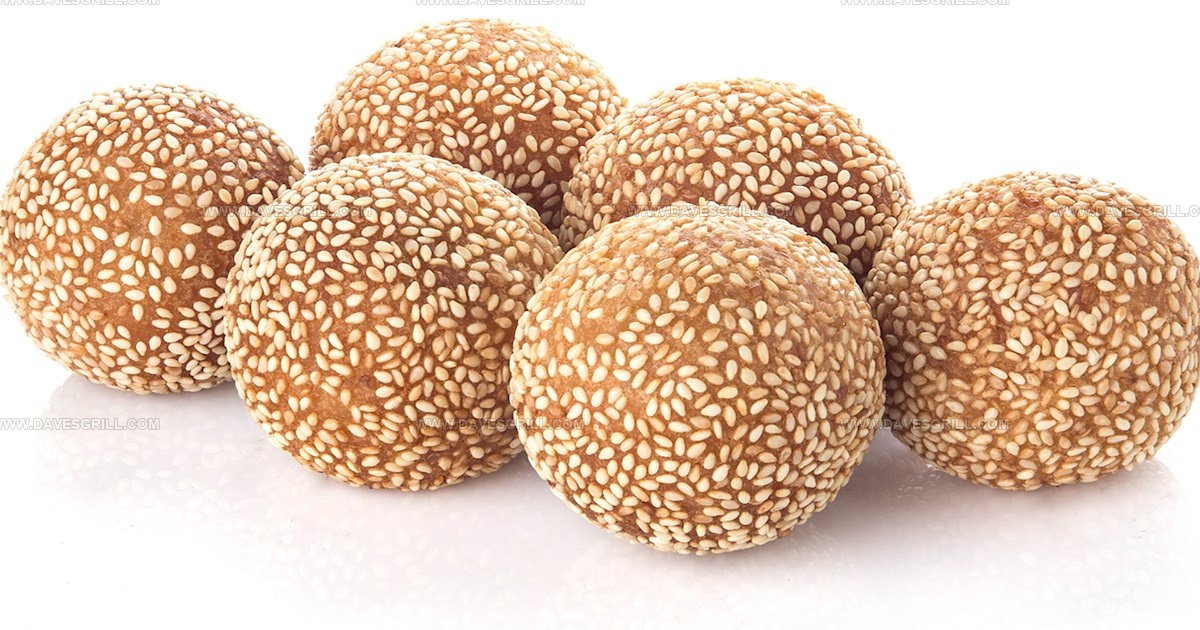
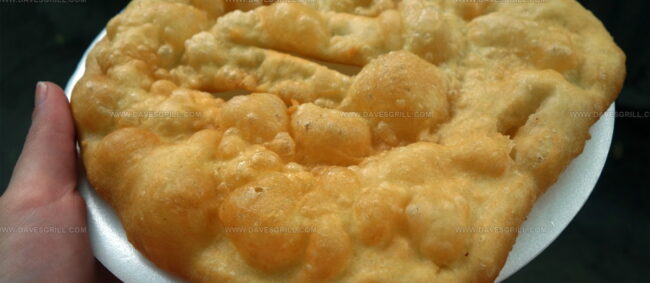
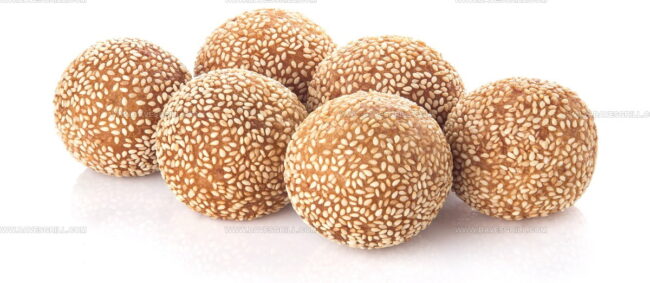
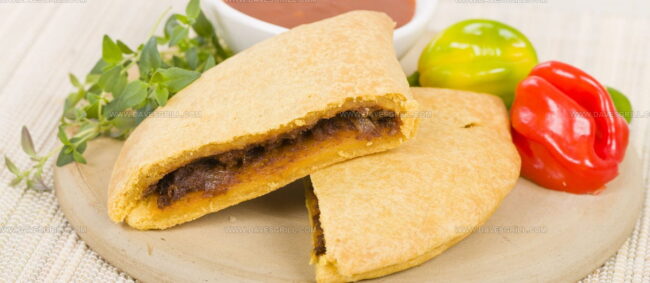
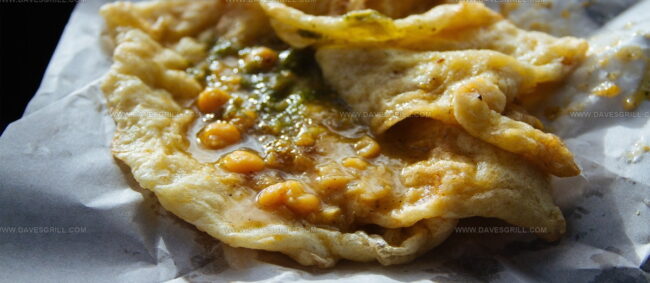
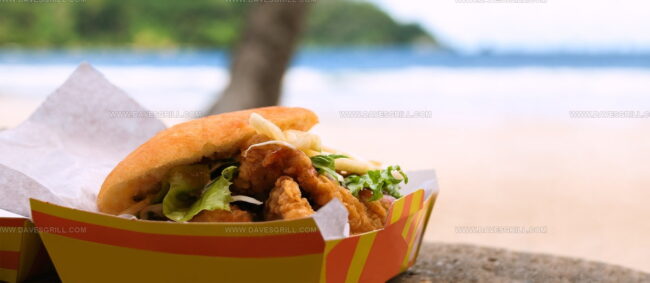
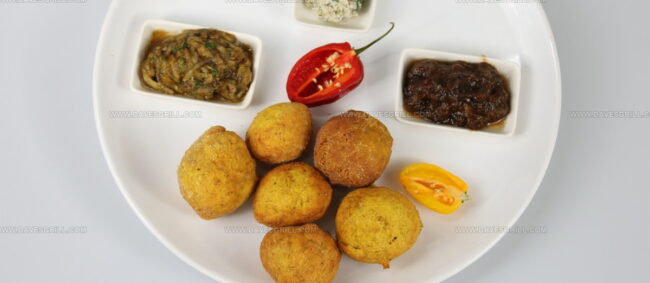
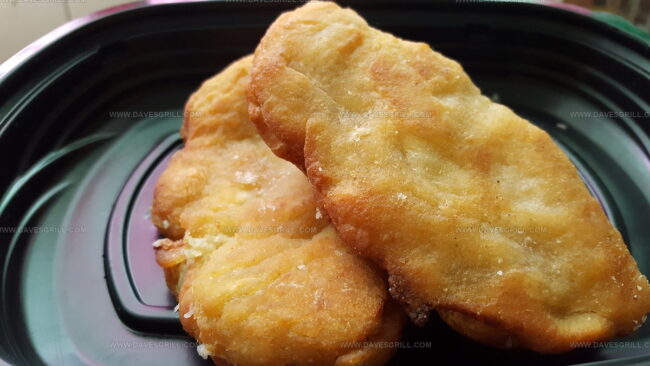
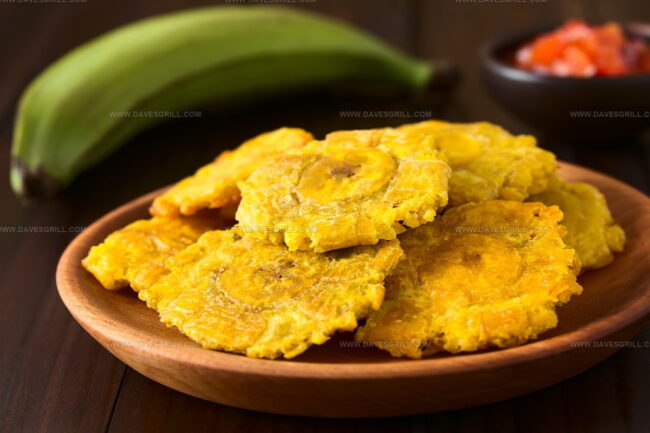
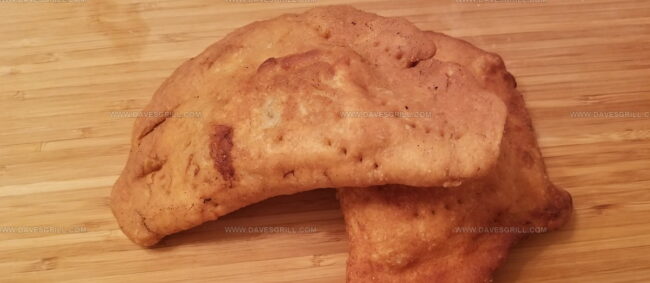
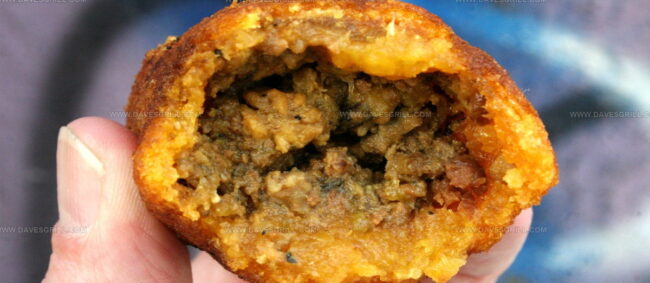
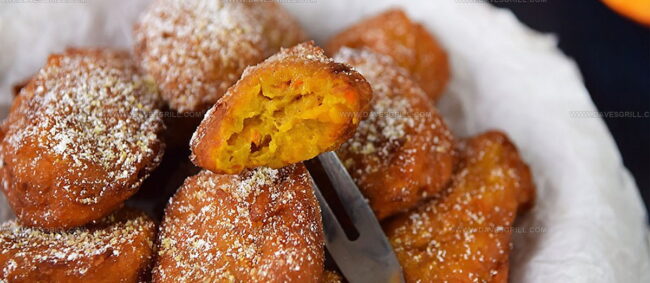
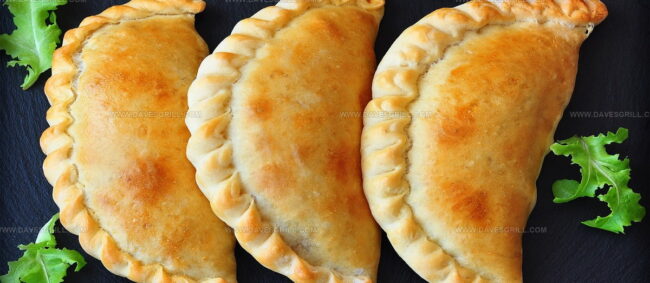
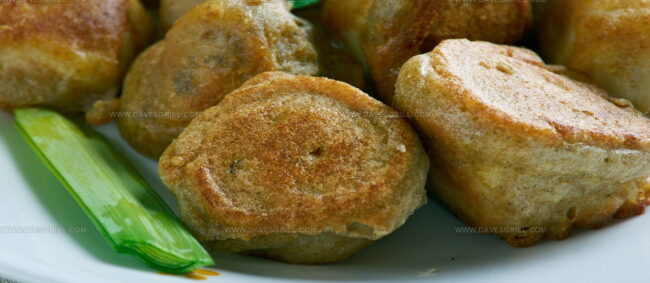
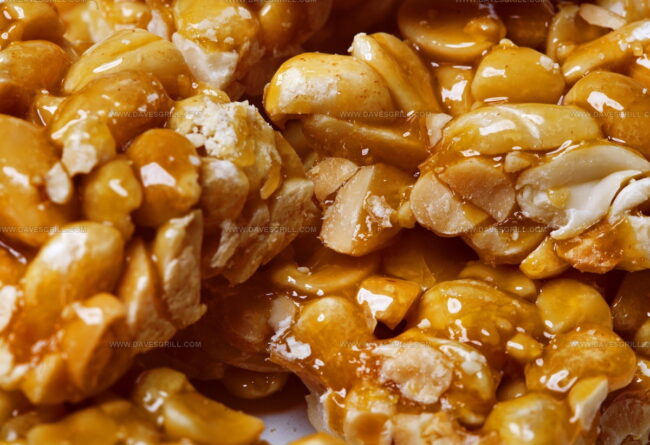
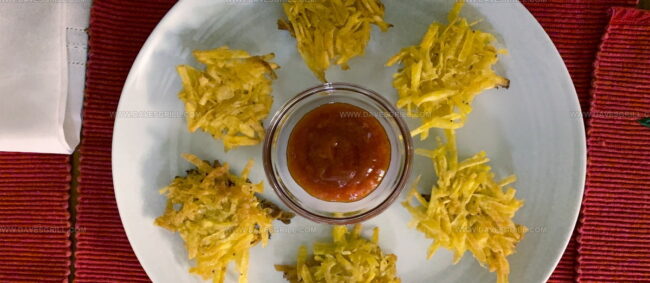
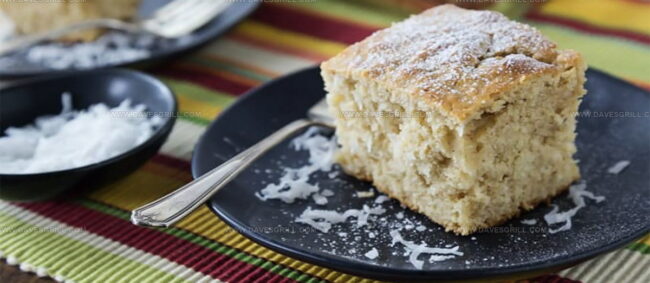
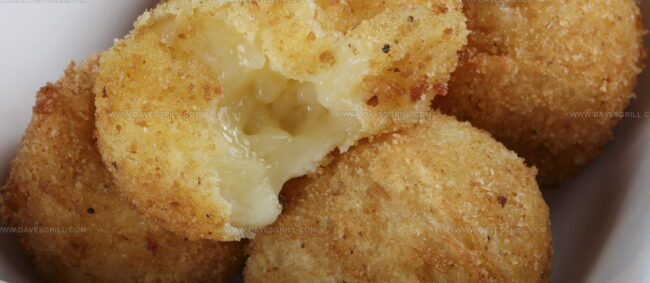
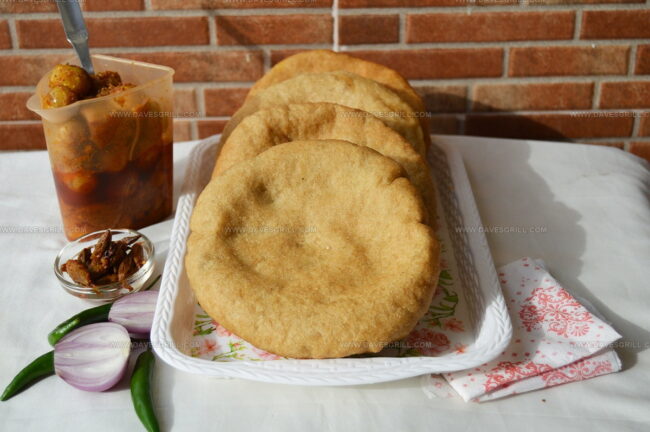
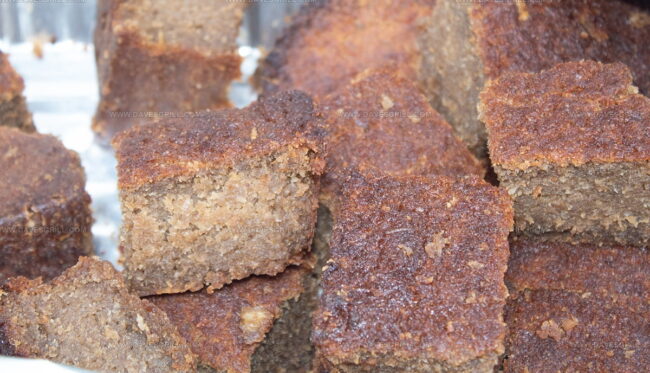
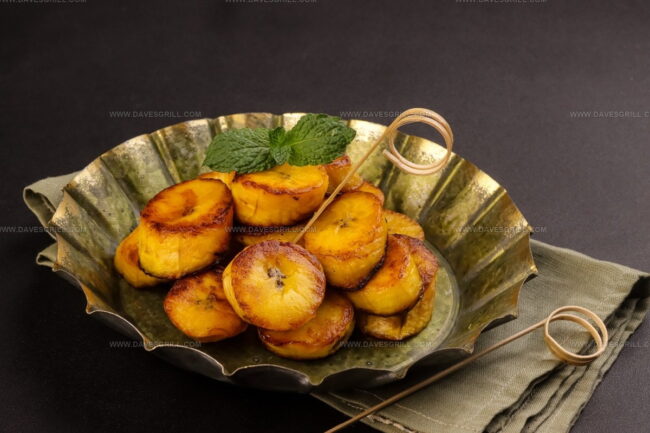
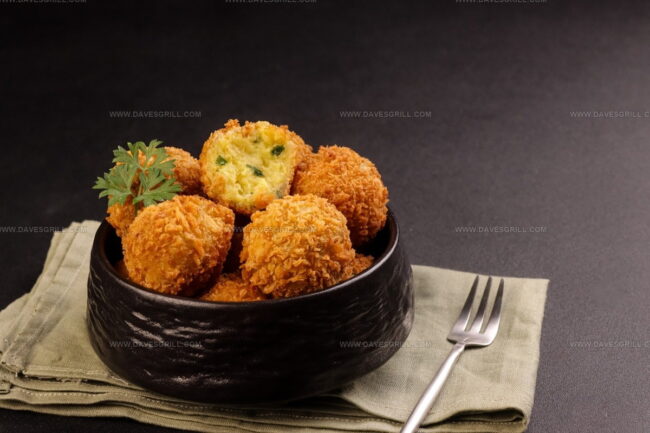
Dave Mitchell
Founder & Chief Recipe Developer
Expertise
Education
Asheville-Buncombe Technical Community College
Associate of Applied Science in Culinary Arts
Focus: Comprehensive training in culinary techniques, kitchen management, and menu planning, with a special emphasis on grilling and outdoor cooking.
Dave Mitchell is the heart behind Daves Grill, a cook, writer, and lover of all things grilled. He studied Culinary Arts at Asheville-Buncombe Technical Community College and spent years cooking, testing, and sharing recipes that actually work.
Dave started Daves Grill to keep things simple: one great recipe at a time. His food is bold, easy to follow, and made for real people with regular kitchens. From juicy steaks to quick sides, Dave’s recipes bring the heat without the hassle.